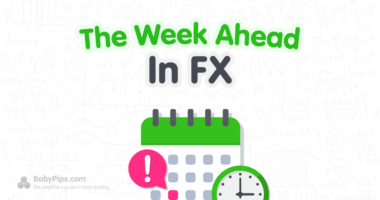The accelerated rally in bond yields took a quick breather earlier this week, likely on inflation fears ebbing a bit with the latest U.S. inflation updates. But that didn’t matter much for the major currencies as they basically repeated last week’s relative performance.
The Comdolls (minus the Kiwi) and Sterling generally outperformed by the Friday close, lead by another winning week for the Loonie. While the “safe havens” and the euro were net losers as the reopening / stimulus / vaccine stories continued to dominate market sentiment.
Notable News & Economic Updates:
10-year Treasury yield rises to 1.6% after Senate passes stimulus package
Yellen says stimulus unlikely to cause inflation problem
RBA’s Lowe pushes back against market, sending yields lower
North America sees drop in COVID-19 cases, Brazil surge worrying, says PAHO
U.S. consumer prices rise 0.4% in February, as expected
U.S., India, Japan and Australia agree to provide a billion vaccine doses in Asia
Johnson & Johnson’s one-shot Covid vaccine cleared for use in the EU
Canada sees blockbuster February job gain; pressure mounts on BoC
New Zealand preliminary ANZ business confidence fell from 7.0 to 0.0
Bond Yield Rally Stabilizes

On the hourly chart above, we can see that the 10-yr Treasury note yield fell from Tuesday through Thursday, likely a reaction to comments from officials like U.S. Treasury Secretary Yellen and RBA Governor Lowe playing down the inflation situation.
We also go the latest U.S. inflation data, which calmed fears that high inflation was right around the corner for the world’s largest economy. We also got an inflation update from China that showed higher prices but no real signs of inflation running rampant just yet. This correlated with a turn higher in the equity markets and gold, while the U.S. dollar and other safe haven currencies fell with the bond yields as seen below.
But 10-year Treasury yield picked up bullish momentum on Friday, possibly a reaction to the passage of the massive $1.9T U.S. stimulus bill, which likely re-fueled speculation of a strong recovery and rising inflation expectations. We also saw a string of net positive COVID vaccine related headlines that likely added to the recovery narrative. The Dollar Index bounce higher from is intra-week lows at 91.35, while the S&P 500 and Gold prices fell heading into the Friday session.
Safe-Havens were the biggest losers, followed by NZD



As mentioned in the previous section above, the “safe haven” major currencies took a hit as the rally in bond yields faded between Tuesday through Thursday.
We also saw arguably net weakness in the euro for most of the week, likely dragged lower given its status as a negative yielding asset, but also likely on COVID-related headlines (e.g., French daily COVID cases rise above 30,000 for first time in two weeks, Italian government approves strict new Covid measures as cases rise). It’s also possible traders priced in expectations that the ECB would announce actions to curve rising bond yields, which is what we got with Thursday’s ECB statement.

CAD, AUD, & GBP Outperformed


Both the Aussie and Sterling were net winners on the week despite lacking major economic catalysts from both Australia and the U.K. It’s likely counter currency weakness and risk sentiment played a role, as well as net positive comments from both RBA Governor Lowe (refuting speculation of an early 2022 rate hike) and BOE Governor Bailey (his overall assessment of Britain’s economic outlook was “positive but with large doses of cautionary realism.”)
But the real winner of the week was once again the Canadian dollar, not only taking advantage of the counter currency weakness and oil strength early in the week, but also a late week surge higher in oil prices on bullish EIA showing rising demand in gasoline and distillate.

And on Friday, Loonie got the final kicker for a stronger move higher to solidify its reign after the latest Canadian employment report showed a very positive surprise of a net positive change of +259K jobs in February and the jobless rate fall to 8.2%. This was big enough to spark speculation that the BOC may have to taper quantitative easing sometime in the second quarter of 2021.

The New Zealand dollar was a slight net loser this week, unable to join its Comdoll cousins in gains and likely held down by net negative economic updates from New Zealand (e.g., New Zealand manufacturing sales dipped 0.6% in Q4, New Zealand’s manufacturing sector saw a slower rate of expansion in February)










